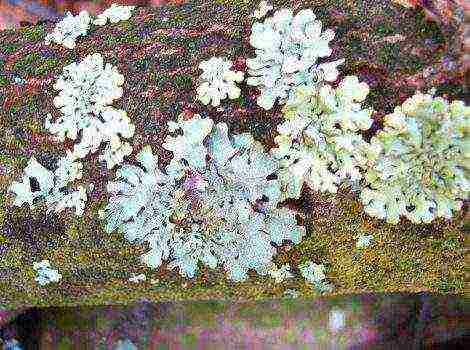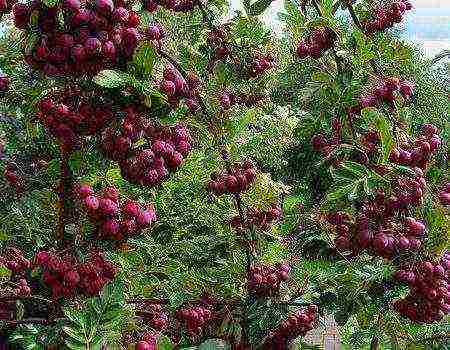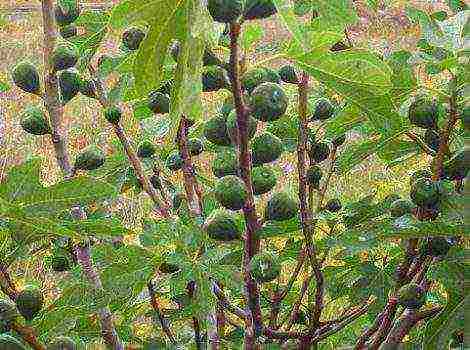Content
The Chinese plum is a dicotyledonous flowering plant whose appearance bears little resemblance to an ordinary plum tree. The native land of the plum is the northern regions of China, hence, in fact, the name.
The shape of the stems and leaves of the plant resembles willow twigs, therefore another name for this plant is used in botany - "Willow plum". You can also find such a name as juilinka.
The height of an adult tree does not exceed 2 meters, which allows you to harvest as quickly and safely as possible.
The color of young branches is bright red with a yellowish tint, the branches are bare, sometimes velvety, covered with purple-brown or red-brown bark.
The shape of the leaves is oblong, average leaf length 7-10 centimeters, width 3-4 centimeters. The edges of the leaves are serrated, they taper at the base. The color of the upper part of the leaf surface is dark green, the surface itself is smooth. The length of the petioles is 1.5-2 centimeters. The shape of the crown is spherical.

Closer to mid-April, the plum is covered with white flowers, collected in umbellate inflorescences. Fruits are round, pear-shaped, or ovoid, about 4-5 centimeters in diameter.
Fruit color yellow, red, purple, or green... The skin of the fruit is rough. Chinese plum has excellent taste, fruits are sweet and sour, well transported, stored for a long period of time. Harvested in August.
Breeding history
For the first time, local gardeners became interested in Chinese plums. Long time it was grown exclusively in Asian countries, but in the first quarter of the last century, an attempt to select the plant was made by Russian breeders.
As a result of repeated crosses, a completely new variety of plum was obtained - "Russian plum", which became a hybrid of cherry plum and Chinese plum. Experiments in the field of breeding continue to this day.
Most popular gardeners use such famous hybrid varieties as:
- Alyonushka... The plant belongs to self-fertile, early maturing varieties. The height of the tree reaches 2-2.5 meters. The crown is dense, raised, conical. Plums are round in shape, the color of the fruit is red. Ripe plums do not crack, their diameter does not exceed 5 centimeters, and their weight reaches 40 grams. The pulp tastes sweet and sour, its color is orange. Up to 190 centners of plums can be harvested from one hectare. The presentation of the fruit remains for a long time, which makes it possible to use this variety for industrial purposes.
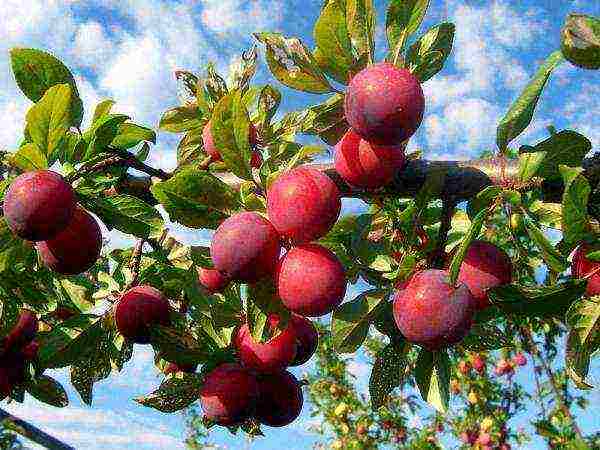
- Manchu beauty... Fruiting begins early, the variety is fast-growing. The crown is dense, its shape is round, the height of the tree does not even reach 1.8 meters. The color of the bark is brown with a slight grayish tint. The leaves are elongated, dark green, shiny. Ripe fruits are small, their shape is round, the base is flat. Fruit weight does not exceed 20 grams. It is possible to collect up to 12 kilograms of plums from one tree. The pulp of the fruit is yellow-green in color, the taste is sweet and sour. The variety is distinguished by drought resistance, fruits are convenient to transport, plums do not lose their presentation. The only drawback is the rapid shedding of ripe fruits.
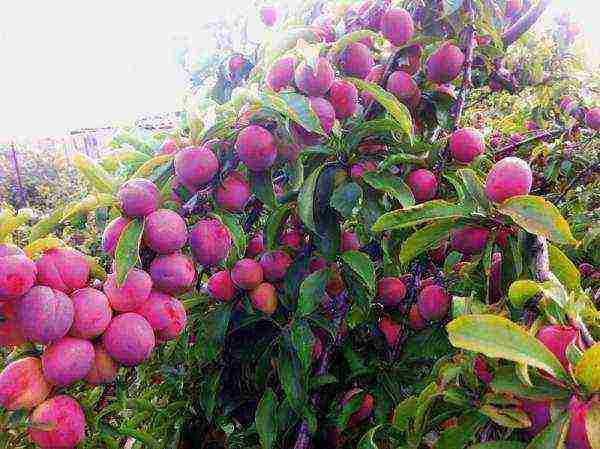
- Ussuriyskaya plum... Medium ripeness variety.Ripens from mid-August to mid-October. The height of the tree reaches 4 meters. The first fruits appear in about 3-4 years. Fruiting lasts up to 10 years. The shape of the fruit is spherical, the color of the fruit is red or yellow. Ripening does not occur at the same time, the fruits are sweet, they cannot be transported. The productivity of the variety is high, the Ussuri plum is quite winter-hardy, and abundant fruiting.
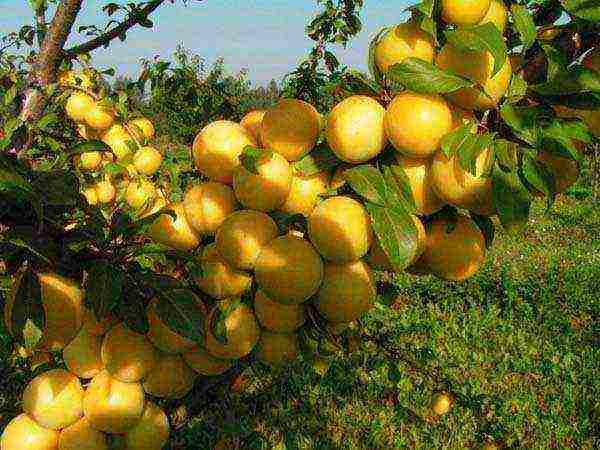
- Covenant... Late-ripening plum, ripening of fruits occurs at the beginning of September. The height of the plum reaches 4 meters. The crown is spreading, its density is average. The fruits are large, their weight reaches 35 grams. The color of the fruit is light yellow, the taste is sweet and sour, the pulp is peach-colored. The stone is large, poorly separated from the pulp. Up to 40 kilograms of fruit can be harvested from one tree. Plum is transported practically without losses, the winter hardiness of the variety is high, pests are practically not afraid of it.
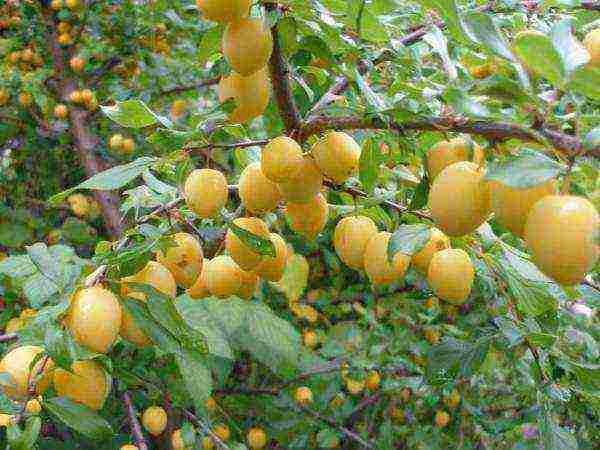
The most suitable varieties for the Russian climate are also considered to be Krasa Orlovshchiny, Krasny Shar, Golden Ball and Nezhenka.
You may be interested in the following publications:
- Planting and caring for thorns or thorns.
- Detailed description of the Candy plum variety.
- A detailed description of the variety of plums Egg blue.
These varieties are very popular with gardeners. Each of them is distinguished by increased resistance to frost, good fertility and immunity to parasites.
Advantages and disadvantages
The main advantage of the variety is increased winter hardiness and high productivity. Unfortunately, this can also be a significant disadvantage.
In regions with an arid or extremely humid climate, the plum can die. Most often, the death of a plant occurs as a result of rotting roots.
Chinese plum - not only fruit, but also ornamental plant... During the flowering period, plum trees become a real decoration of any garden, therefore they can often be found in this very capacity.
In addition, many varieties of plum cannot pollinate themselves, bloom early, their root collar is quickly damaged.
Growing region and peculiarities of growing in other regions
In vivo Chinese plum grows on mountainous edges... The wild plant was cultivated several centuries ago by Chinese gardeners. Soon the secret of growing plums became available to the inhabitants of Japan and Korea.
In Russia, the Chinese plum was not popular for a long time. However, the plant has an amazing resistance to frost.
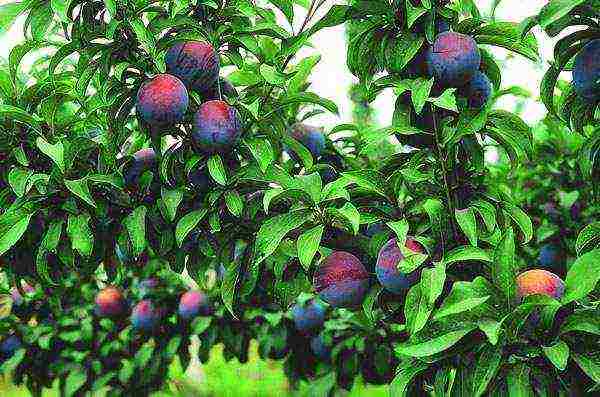
The tree can withstand a drop in temperature up to -56 degrees Celsius, therefore it is successfully grown in Siberia and the Far East. The tree also feels good in central Russia.
Fruiting starts early, about 2-3 years after planting the seedling.
Planting rules for seedlings
Plum prefers to grow on chernozem, forest, clay and gray soils with a neutral or alkaline environment and an increased amount of calcium. Groundwater should be located no closer than 1.5 meters to the surface.
The planting hole is made large... It should hold up to 10 liters of rotted manure, 50 grams of potassium salt and 300 grams of superphosphates. To prevent rapid evaporation of moisture, the ground around the seedling is sprinkled with sawdust and peat.
Plum does not pollinate on its own, because the seedlings should be planted next to other trees, best of all next to the cherry plum.
Features of care and pruning
Chinese plum is not picky about growing conditionsbut in an effort to get a good harvest, gardeners begin to feed the plant the next year after planting.
Used as top dressing nitrogenous fertilizers... Top dressing is done up to 3 times a year.
First feeding produced before flowering. The soil layer around the tree is watered with a solution of water, potassium sulfate and urea. To prepare the solution, you will need up to 10 liters of water, 60 grams of potassium sulfate and the same amount of urea.
The second time the plant is fed after the appearance of the first fruits and their entry into the stage of ripening.
Last dressing produced after the harvest is harvested.
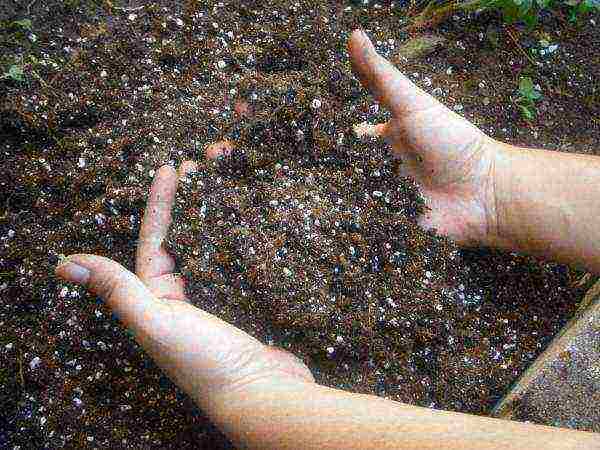
Chinese plum loves moist soils... Water the plant regularly. During dry periods, watering is accompanied by soil mulching. At the same time, special attention is paid to the impregnation of the soil layer with water to a depth of at least 0.4 meters.
Immediately after planting, the seedling is pruned about 50-60% of its original growth. Such a sharp pruning accelerates growth, contributes to getting used to new conditions.
Reproduction of the Chinese plum
The tree propagates with the help of a bone, or ordinary grafting... To get the seed, you should choose healthy ripe fruits that have fallen from the tree on your own. It is necessary to separate the pulp from the stone only after the fruits are caked.
If the seed is planted in late autumn or early spring, care should be taken to ensure that it does not freeze. After planting, the place where the bone is located should be covered with sawdust or straw.
Plums are propagated by grafting only by experienced breeders.... It is unlikely that it will be possible to inoculate a tree correctly the first time; it is much easier to grow a seedling from a stone.
Diseases and pests
Plum is practically not afraid of pests, it is not afraid of diseases either., which often affect fruit trees.
The greatest threat to the tree is plum moth... The pest affects the fruits and leaves of the plant.

The fight against him begins during the flowering period. and stops about 1 month before the planned harvest. Pheramone traps and spraying the tree with chemicals are effective means of control. Spraying is done every 2 weeks.
Plum is also affected by diseases such as moniliosis and clasterosporia... In order to prevent the development of these diseases, the plant is treated with a 3% solution of Bordeaux mixture.
